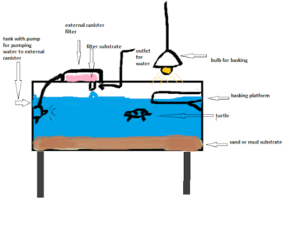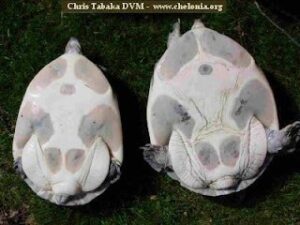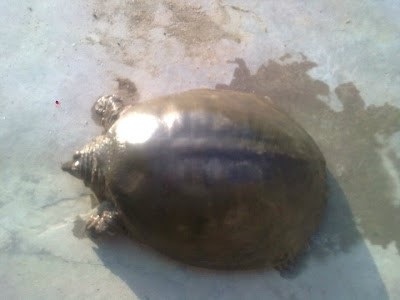Care & Management of Indian Flap shell turtle (Lissemys Punctata)
It is a very common fresh water turtle found in India and it can be found fairly easily in ponds, steams, marshes, near our house during rainy season and in fish markets. they have a soft leathery type of shell and they are called as flap shell because they have flaps on the plastron above their legs which cover their legs when they retract in the shell. They have a snout which can be seen clearly in the picture above. its size ranges from about 240 to 370 mm in length.
Diet:
It is omnivorous means it eats everything ranging from snails, frogs, fishes, shrimps, aquatic plants, flowers, fruits, plant leaves etc. mine loved aquatic plant (you can buy them from fish store, they are available now a days for setting up planted aquariums, try to get cheap ones or you can directly get them from outside ponds and marshes if you know any), you can also try to make them eat artificial turtle food but i don’t know if they will eat it or not, mine just refused to eat it, no matter how much I tried he would never eat it, give it a try may be you will be the lucky one.
Enclosure:
They prefer quite and stagnant waters with sand or mud as a substrate since they like to burrow in it, so if you have an outside pond then it would come in handy, also as with all the turtle species you will have to provide an area for basking in their pond. if you are keeping them in a tank or an aquarium then it should have sand or mud as a substrate, the filtration ideally should be external filters (you will need a powerful filter as they tend to be dirty) my advice would be to not to opt for power filters but go for external canister filters if you cannot afford external power filters , in external canister filters a pump is placed inside the tank which pumps water to a canister placed outside the tank with its outlet connected to tank, the water gets filtered in the substrate of the canister and then flows back from the outlet to the tank. provide a bulb and a platform for them on which they can bask.
A basic idea of the enclosure you can get from the sketch below:-

above layout is applicable for setting up the tank for any turtle, this is a basic layout showing all the things which are absolutely necessary for setting up the tank more features can be added based on your creativity.
breeding:-
they become adult around 2-3 years of age. male and female can be seen in the following image:

male is on right with elongated body and female is on left with more ovoid shape of body, also see the longer tail of male. if you want to know further about differentiating between male and female you can consult the following link- http://www.chelonia.org/sexing/sexing_L_punctata.htm
after mating the eggs are laid 2 times in a year in a batch of 2-12 in a nest in sandy or muddy area exposed to sun.
By: Dr. Siddharth Mishra
credit-https://careforturtles.blogspot.com/2012/12/indian-star-tortoise-care.html


